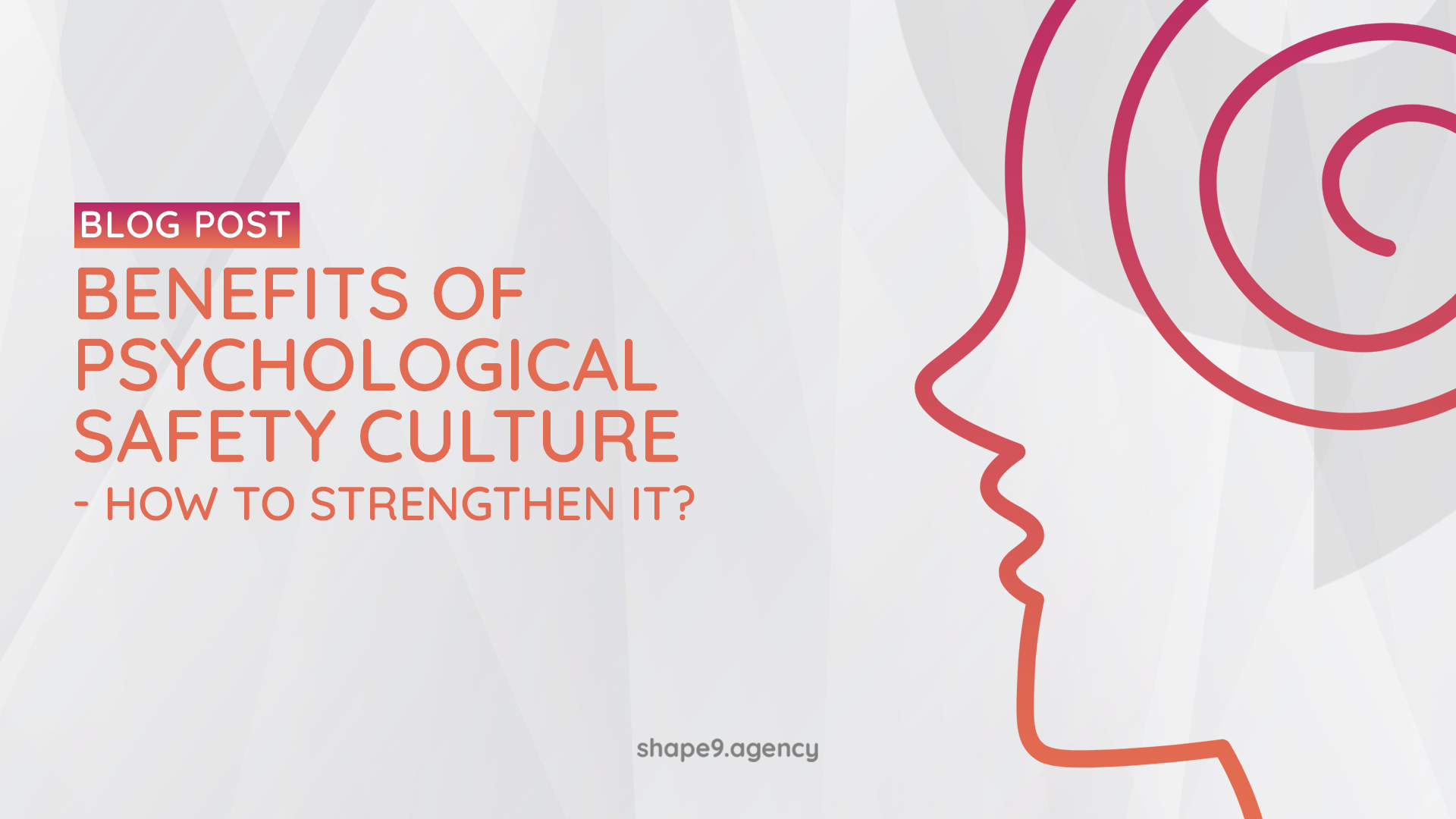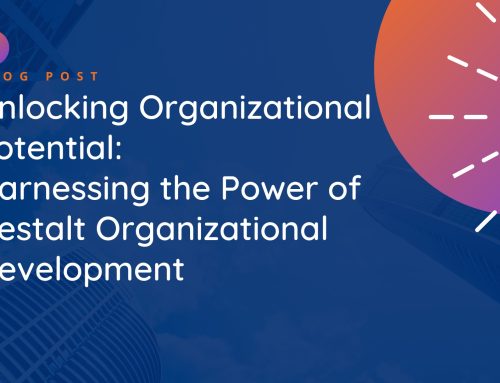A culture of psychological safety certainly plays a crucial role in the business and has never been more important. The pandemic changed the world and the workplace as we know it, leaving a strong psychological impact on everyone, leading to uncertainty about what the “new normal” will look like and how to adapt.
Many studies have shown that organizations benefit greatly from different opinions and perspectives of people who bring various experiences and the ability to identify challenges and offer innovative solutions. However, the challenge most companies and teams face is the discomfort and fear of people expressing their opinions, actively engaging in constructive discussions with their leaders, and sharing their concerns.
According to a 2017 Gallup poll, 3 out of 10 employees strongly agree that their opinion will not be taken into account. At the same time, remote work has practically brought this challenge to an even larger scale, where people often feel ignored or dismissed during virtual meetings.
We know that leaders play a crucial role in every business segment. The last few years have been particularly challenging for all leaders who have learned and adapted along the way – looking for new ways to communicate, solve problems, involve employees, and much more.
Especially now that the work setup is changing, they must understand what psychological safety is, why it is essential, how you can tell if your team is safe or unsafe, and how to integrate it into the company culture.
What Is Psychological Safety at Work and When Working Virtually?
Amy Edmondson, a Harvard Business School professor, coined the term psychological safety as making everyone feel safe to be their authentic selves, speak up, express themselves, and appear vulnerable in front of others. She defines it as “a shared belief that the team is safe for interpersonal risk-taking.”
Psychological safety also strengthens the culture of transparency and appreciation, meaning everyone has a right and is encouraged to share their opinions, questions, and concerns, that they will be heard and that their point of view will be welcomed and appreciated. This makes employees feel safe and ensure that their beliefs will not be punished and bullied or that they will not be humiliated. The goal is to make employees feel comfortable being themselves.
Shane Snow, a journalist covering innovation and human behavior, media-tech entrepreneur, and bestselling author, defines psychological safety as knowing that the things you say will not be used against you as long as you mean well, assuming good intent is foundational in nurturing this environment.
Why Psychological Safety is Important?
According to Maslow’s hierarchy, safety is a basic human need. Now imagine how important it is to invest in the sense of safety in the workplace.
A strong culture of psychological safety enhances employee engagement, fosters an inclusive workplace culture, inspires creativity and ideas, improves employee well-being, creates brand ambassadors, reduces employee turnover, and boosts team performance.
Communicators play a vital role in boosting and sustaining such a culture by thoughtfully assessing how and what they communicate. Communicating with humanity, empathy, accountability, and transparency is of utmost importance to foster inclusion and belongingness and give employees a sense of safety, comfort, and confidence.
Consider how a work environment where ideas are rejected, or leaders are not interested in giving a chance to an innovative approach affects careers, mental health, and the organization as a whole, especially given that teamwork is based on trust, which is a prerequisite to building the need for vulnerability.
How can I tell if my team is safe or unsafe?
It is essential to be aware of what is safe and unsafe and be open to change to determine if your team has or does not have a sense of safety at work. When the team does not feel safe, you will witness their behavior and response adjustment, resulting in a lack of effectiveness, energy, and productivity. There are several ways you can evaluate whether your organization is psychologically safe.
- Unsafe Environment
The most common forms of unsafe work environments are harassment, microaggression, gaslighting, lack of communication, lack of boundaries, lack of awareness, and bias. However, suppose there is no negative response to these phenomena. In that case, it results in the employee or team feeling part of the environment in which they can achieve results and personal and professional growth.
- Safe Environment
A self-assessment called “The Fearless Organization Scan” was developed with Professor Edmondson and used four dimensions to measure psychological safety, namely:
- What is the degree to which it is permissible to make mistakes?
- To what degree can difficult and sensitive topics be discussed openly?
- How much are people willing to help each other?
- To what degree can you be yourself and are welcomed for this?
The following statements are analyzed during the assessment:
- Employees actively share opinions that differ from other colleagues or managers’ views.
- Employees use transparent, straightforward, respectful language.
- Employees receive positive or negative feedback when asked.
- Employees receive negative feedback as constructive criticism and an opportunity to learn and cooperate.
- Employees are provided with multiple feedback channels.
- Employees share factors of projects at risk or not going well at status meetings.
How To Create a Culture of Psychological Safety?
Coaching focused on behavior, which starts with each team member and spreads throughout the organization, is the first thing to do when creating a psychologically safe work environment. Changing cultural norms requires progressive learning from all who make up the organization, so the coach’s role is to transfer knowledge through experimental learning. To maintain a culture of psychological safety, leaders must continuously lead by example through inclusive behaviors. It is important to note that this is a process and takes time.
The feeling of belonging and well-being are the most important factor of a psychologically safe workplace. Employees must feel accepted and seen to reach their full potential and contribute in ways that advance their organization. It takes commitment, primarily from senior leaders, to cultivate this culture. An organization should encourage leaders and teams to concentrate on well-being, solidarity, and support and approach psychological safety holistically while heading toward a common purpose and becoming part of the solution.
Amy Edmondson and Jeff Polzer, Harvard Business School professors, say that establishing norms is critical to success and participation in creating psychologically safe environments. It should be equally important to leaders what they say and how employees react and respond to their communication, which is usually not the case.
There are four stages of psychological safety developed by Dr. Timothy Clark. He argues that team members must progress through these stages to feel comfortable speaking up and making valuable contributions.
- Stage 1: Inclusion safety
The first stage of safety refers to satisfying the basic human need for connection and belonging. If this stage is met, team members feel safe and accepted as they are.
- Stage 2: Learner safety
The second stage of safety refers to a sense of security that team members learn, ask questions, experiment, receive feedback and make mistakes.
- Stage 3: Contributor safety
In the third stage of safety, team members feel safe to make a valuable contribution using their skills and talents.
- Stage 4: Challenger safety
Finally, in the fourth stage of safety, team members feel safe enough to challenge the status quo when they feel there is an opportunity for change and improvement.
Leaders can contribute by:
- Setting priority
Continuously discuss the importance and benefits of psychological safety at work and lead by example using inclusive leadership practices.
- Facilitating discussions
Show interest, empathy, open-mind, and willingness to truly listen to employees and show that they appreciate when someone says what they think.
- Promoting standards for handling failure – Encourage employees to learn from mistakes and openly share lessons learned to stimulate innovation.
- Encouraging new ideas, whatever they may be – Learn how to nurture innovative mindsets and give more context when challenging an idea,
- Adopting the productive conflict principle – Promote dialogue and constructive debate when managing conflicting perspectives.
Team members can contribute by practicing positive interactions and conversations built on trust by:
- Asking team members open-ended questions,
- Listening actively and curiously to comprehend sentiments, values, facts,
- Agreeing to communicate failures as opportunities and lessons learned,
- Being honest when conveying appreciation or dissatisfaction,
- Asking for and giving support,
- Respecting expertise,
- Fostering and communicating gratitude.
Jake Herway, Executive Advisor for Gallup, recommends that the team be asked the following questions to align the team with a shared purpose and identity:
- What can we count on each other for?
- What is our team’s purpose?
- What is the reputation we aspire to have?
- What do we need to do differently to achieve that reputation and fulfill our purpose?





